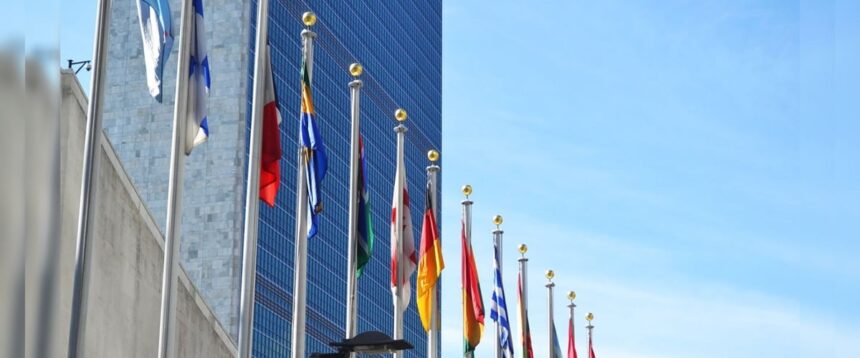“`html
During the 79th United Nations General Assembly (UNGA), global leaders endorsed a political declaration at the High-Level Meeting on Antimicrobial Resistance (AMR). This commitment aims to reduce the estimated 4.95 million human fatalities linked to bacterial antimicrobial resistance annually by 10% by the year 2030.
The declaration emphasizes sustainable national funding and seeks US$100 million in catalytic investments, aiming for at least 60% of countries to have financed national action plans addressing AMR by 2030. Achieving this target will involve diversifying funding sources and attracting more contributors to the Antimicrobial Resistance Multi-Partner Trust Fund.
The Food and Agriculture Organization of the United Nations (FAO), along with the United Nations Environment Programme (UNEP), World Health Organization (WHO), and World Organisation for Animal Health (WOAH)—collectively known as the Quadripartite—applauded this declaration. They commend nations for acknowledging that a comprehensive approach is necessary to combat AMR through a One Health strategy, which recognizes that human, animal, plant, and environmental health are interconnected.
The meeting featured global advocates including Prime Minister Mia Mottley of Barbados, survivors of AMR-related infections, civil society representatives, and various stakeholder organizations worldwide.
AMR arises when microorganisms such as bacteria, viruses, fungi, or parasites become resistant to medications designed to treat them. This resistance complicates treatment options for infections and heightens risks associated with disease transmission leading to severe illness or death.
A Call for Comprehensive Multisectoral Action by 2030
The declaration sets an ambitious goal regarding human health, stipulating that at least 70% of antibiotics utilized globally should be classified under WHO’s Access group antibiotics—those with minimal side effects and lower potential for fostering AMR.
Additionally, it outlines targets related to infection prevention and control (IPC). By 2030, all countries should ensure basic water supply services alongside sanitation hygiene management in healthcare facilities while achieving compliance with WHO’s minimum IPC program requirements in at least 90% of nations. There are also commitments aimed at ensuring equitable access to antimicrobials while enhancing surveillance data reporting on their usage across various sectors.
Agriculture and animal health commitments include significantly reducing antimicrobial use within agri-food systems globally by prioritizing infection prevention measures funded appropriately. This initiative aligns with WOAH’s priority disease list as well as FAO’s RENOFARM initiative, which promotes preventive strategies like vaccination programs for animals alongside good husbandry practices.
The environment’s role is highlighted in preventing antimicrobial discharge into ecosystems while advocating increased research into its environmental impacts related to AMR pollution sources.
This complex issue necessitates a multisectoral response integrating interventions from human health care systems along with agricultural practices and environmental safeguards.
“The multifaceted challenge posed by AMR requires a One Health approach , uniting efforts across human health sectors alongside agriculture,” stated FAO Director-General QU Dongyu. “Sustainable financing is crucial in supporting clear priorities aimed towards decisive actions tailored according local contexts.” He emphasized that universal access must be ensured not only concerning medicines but also diagnostics while promoting preventive measures through investment in research initiatives focused on food security within resilient agrifood systems.”
A Clear Path Forward Against AMR Challenges
This political declaration establishes the Quadripartite Joint Secretariat on AMR as a central coordinating body tasked with overseeing global responses against this pressing issue. It calls upon these organizations together with member states to revise the Global Action Plan (GAP) on Antimicrobial Resistance before 2026 ensuring an inclusive multisectoral response via One Health principles.
The Quadripartite will monitor progress made towards implementing both GAP objectives along political declarations outcomes moving forward.
Furthermore they’re urged submit annual reports detailing implementation progress made regarding their respective National Action Plans addressing issues surrounding Anti-Microbial Resistance(AMRs) via Tracking Country Self-assessment Survey(TrACSS).
(Note: The quote from FAO Director-General QU Dongyu was edited shortly after initial publication.)
“`






